Experiencing Japan, its culture, and the iconic temples and places of worship representing Japanese values offers a glimpse into another way of living, thinking, and believing.
It is difficult for most Westerners to understand Japanese religion, but it isn’t essential to completely understand it. If you want to explore the history and traditions of Japan that are important to its people. Here are 10 venerated spots where you can do just that.
First impressions suggest Japanese society is secular. Second looks reveal some Japanese are very “religious” when they visit temples on certain days and specific times of their lives of special occasions.
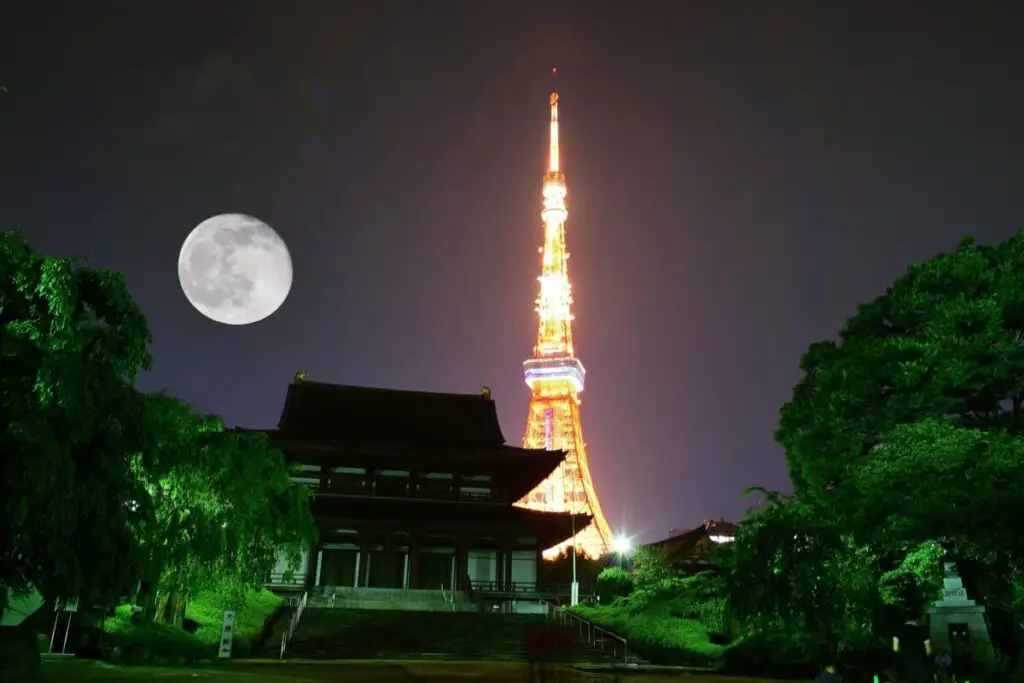
Shintoism and Buddhism revere and respect honor, contributing to society, and self-development.
That excellence, existing in things, ancestors, tribes, and people, is called kami. While not “gods” in the Western sense, kami are represented by icons and venerated in temples throughout Japan.
Zojo-ji Temple (増上寺, Zōjōji)
San’en-zan Zōjō-ji is a Buddhist temple near the Tokyo Prince Hotel and Tokyo Tower. Here you will find the image of Amida Buddha, deeply worshipped by Leyasu Tokugawa.
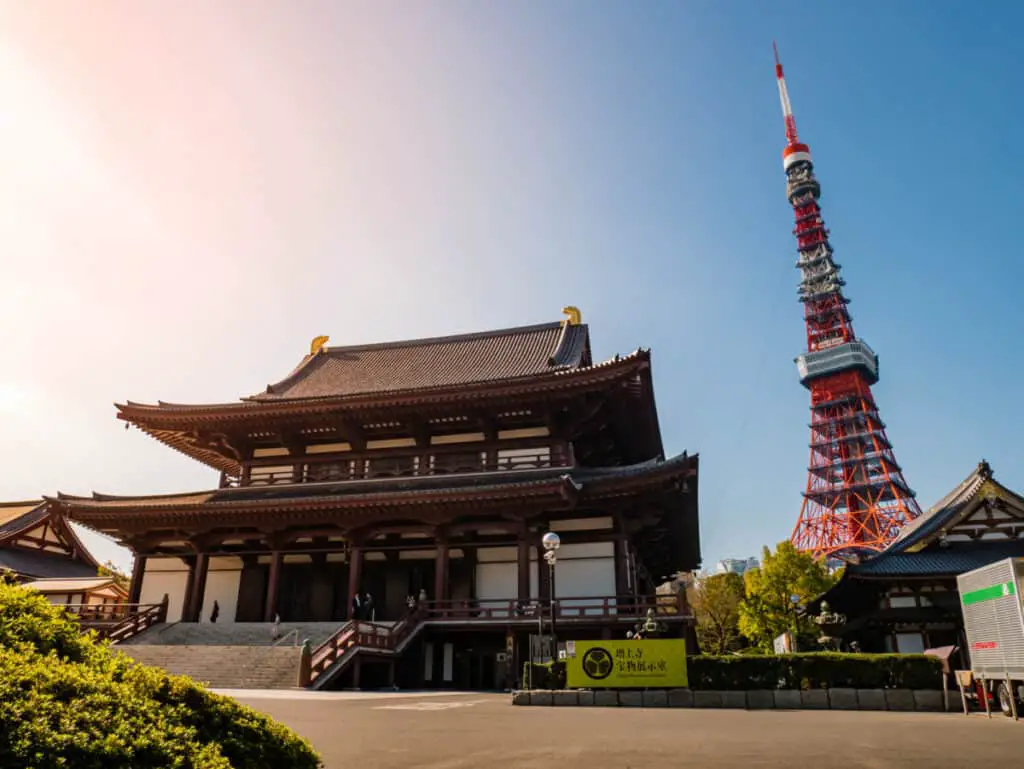
Zojo-ji Temple Official Website
Tokugawa and six shoguns, clan rulers of Japan in the Edo period, are buried on the grounds in the Taitoku-in Mausoleum. Here also is the oldest wooden building in Tokyo, the Sangadetsumon, dating from 1622.
On one side of the temple building, visitors will notice rows of small statues, many decorated in red and well preserved.
This site is The Garden of Unborn Children and honors Jizo, the beloved protector of children’s souls. The statues represent miscarried, aborted, stillborn infants, or any children that die before their parent’s own death.
Meiji Shrine (明治神宮, Meiji Jingū)
You will find this Shinto shrine in Shibuya, Tokyo, alongside the JR Yamanote train line’s busy Harajuku Station. The grounds contain walking paths through a forested area in the heart of Tokyo.
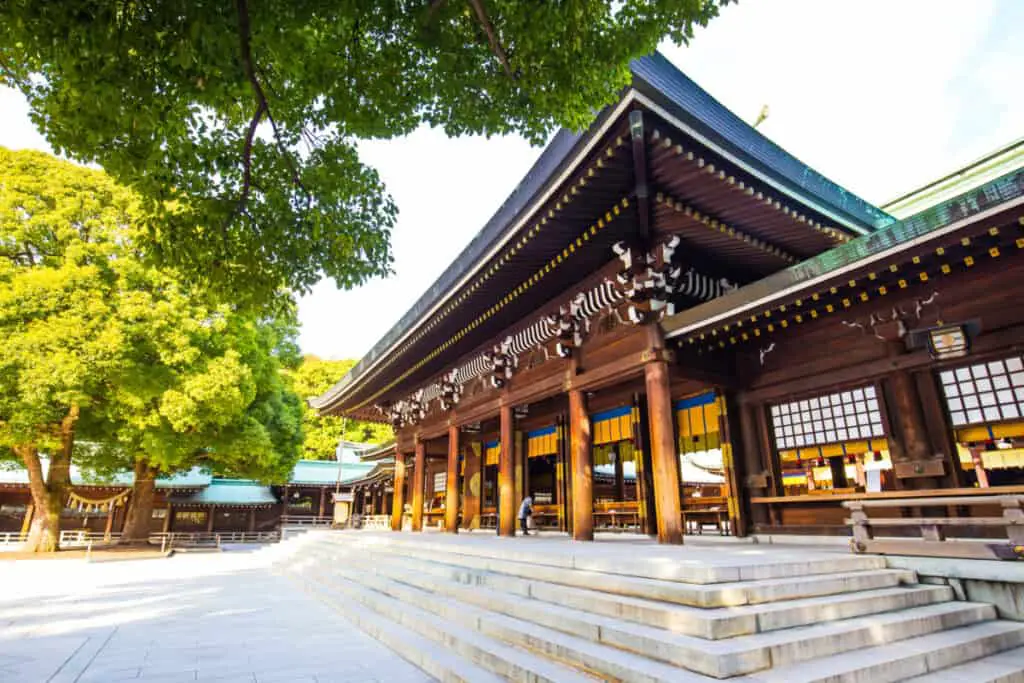
The Meiji Shrine venerates the spirits of Emperor Meiji and his wife Shōken. Japanese people believe their souls are enshrined here, while the emperor’s body lies at Fushimi-momoyama, south of Kyoto.
Meiji is the first Emporer of modern Japan. He is credited with ending Japanese isolationist policies and opening Japan to the outside world.
Hie Shrine (日枝神社, Hie Jinja)
Japan’s government has granted its highest level support, Kanpei-taisha, to Hie Shrine. If you visit the Imperial Palace, stop by this popular shrine just outside the palace grounds.
The June 15 celebration of Sannō Matsuri, one of three great Japanese festivals, is celebrated here. Nestled in the urban environment on top of a steep hill, Hie Jinja is remarkable for its escalator, red torii gates, and monkey statues.
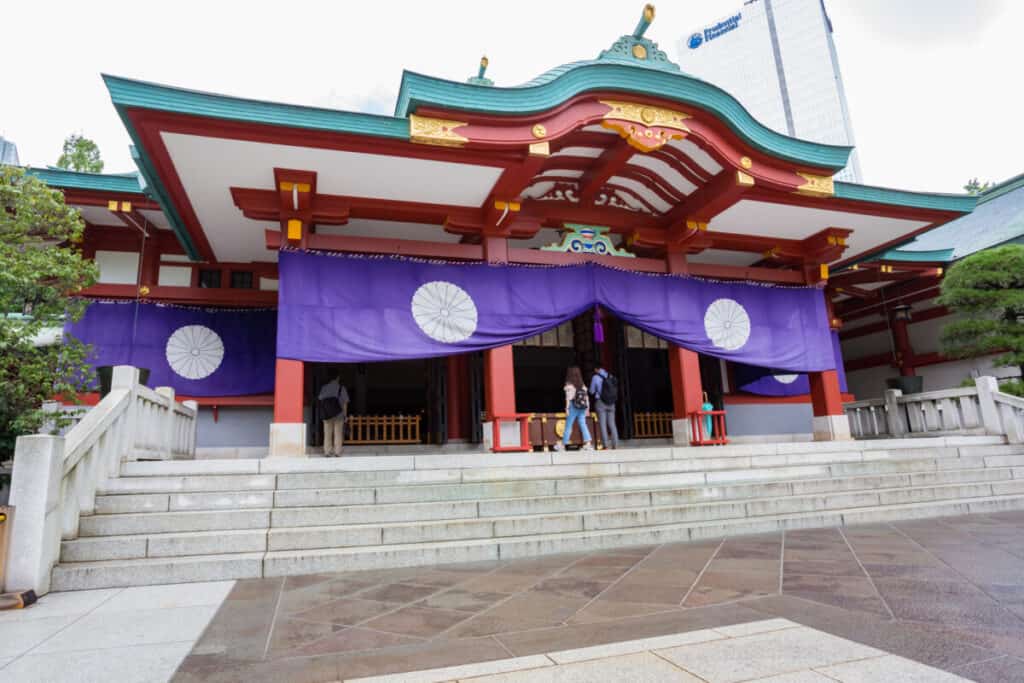
The kami of The Hie Shrine is Oyamakui-no-kami, a god representing good health. The monkeys are his messengers and are considered patrons of harmonious marriages and safe childbirth.
The torii gates symbolize the transition from a contextual reality to the realm of the spirit as you enter the shrine. Red invokes the power of the gods and wards off evil spirits.
Nikolai Cathedral (復活大聖堂, fukkatsu daiseidō)
On a hill next to Ochanomizu subway station in Kandae, Tokyo is The Restored Cathedral of the Eastern Orthodox Church in Japan.
It is also known as the Holy Resurrection Cathedral and as Nikolai-do. This cathedral would go mostly unnoticed anywhere else in the world.
Nikolai Cathedral Tokyo Official Website
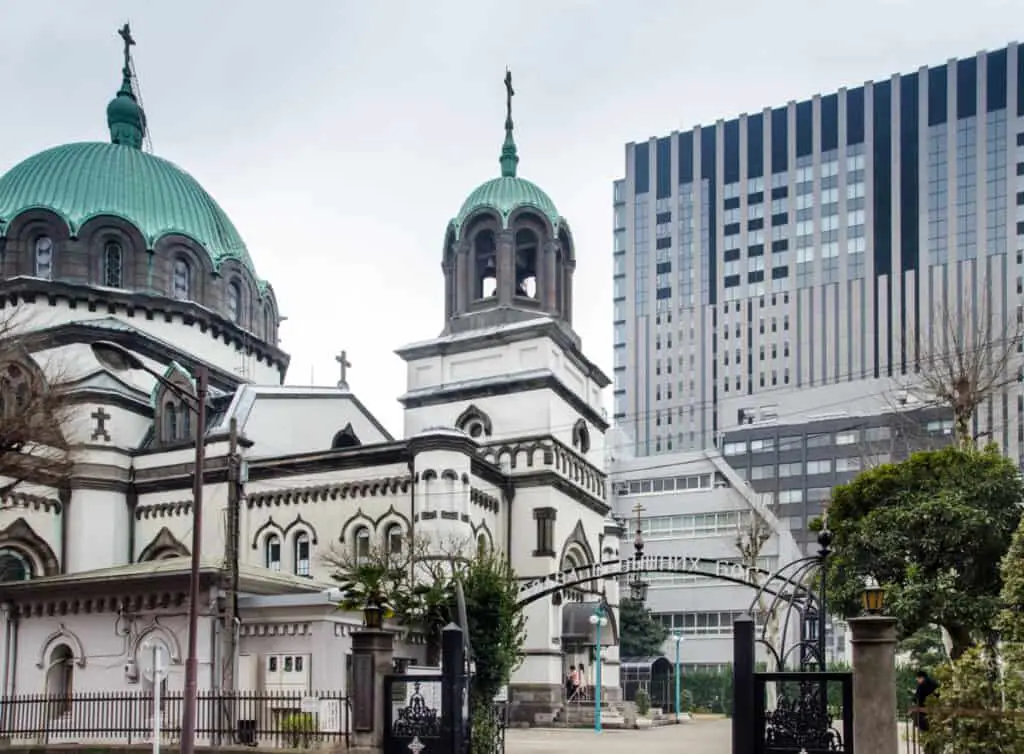
Built-in the shape of a Greek cross, its Byzantine architecture is prominent, unique, and loved by many as a landmark in Japan.
This cathedral honors the founder of the Japanese Orthodox Church, Ivan Dmitrievich Kasatkin, later St. Nicholas of Japan. The site is dedicated to the Holy Resurrection of our Lord Jesus Christ.
Nezu Shrine(根津神社, Nezu-jinja)
Located in north Tokyo, close to Ueno Park, one of Japan’s oldest and most beautiful shrines, Nezu Shrine holds 3,000 azalea bushes, ponds of carp, and tunnels of small shrine arches.
Reflecting Japan’s age and beauty, several magnificent wooden structures on shrine land are designated an Important Cultural Property.
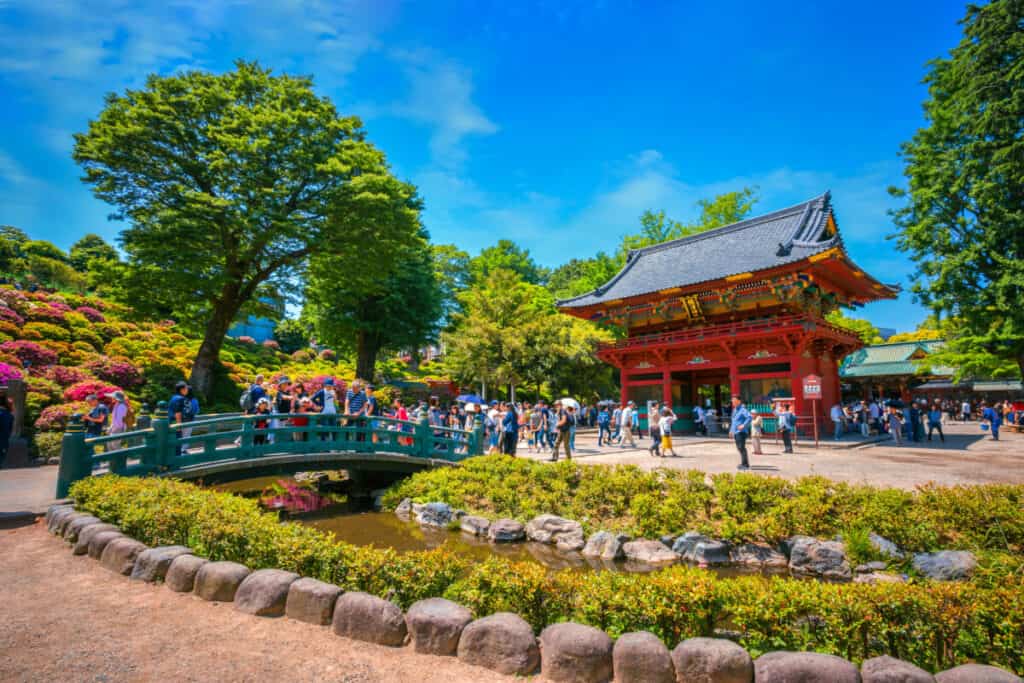
The spirits of the shrine are Susanoo-no-mikoto, said to ward off evil, Oyamakui-no-mikoto, the god of agriculture, and Hondawake-no-mikoto, the god of victory.
Okuninushi-no-mikoto, the god of fortune and love, and Sugawara-no-Michizaneko, god of education, are also enshrined. Since more than one god is worshipped, Nezu-jinja is believed to grant several prayers for preventing bad luck and providing success in marriage, business, and exams.
Yushima Seido Temple (湯島聖堂, lit. ’Yushima Sacred Hall’)
You can find Yushima Seido Temple four minutes away from the JR Ochanomizu train line’s Hijiribashi and Shin-Ochanomizu Stations.
The temple is just across the Hijiribashi (Sage’s Bridge). It is stark and sober in relation to other religious structures, the largest Confucian temple in Tokyo. It is a reminder of the philosophical values Japan shares with Asia.
Yushima Temple Official Website
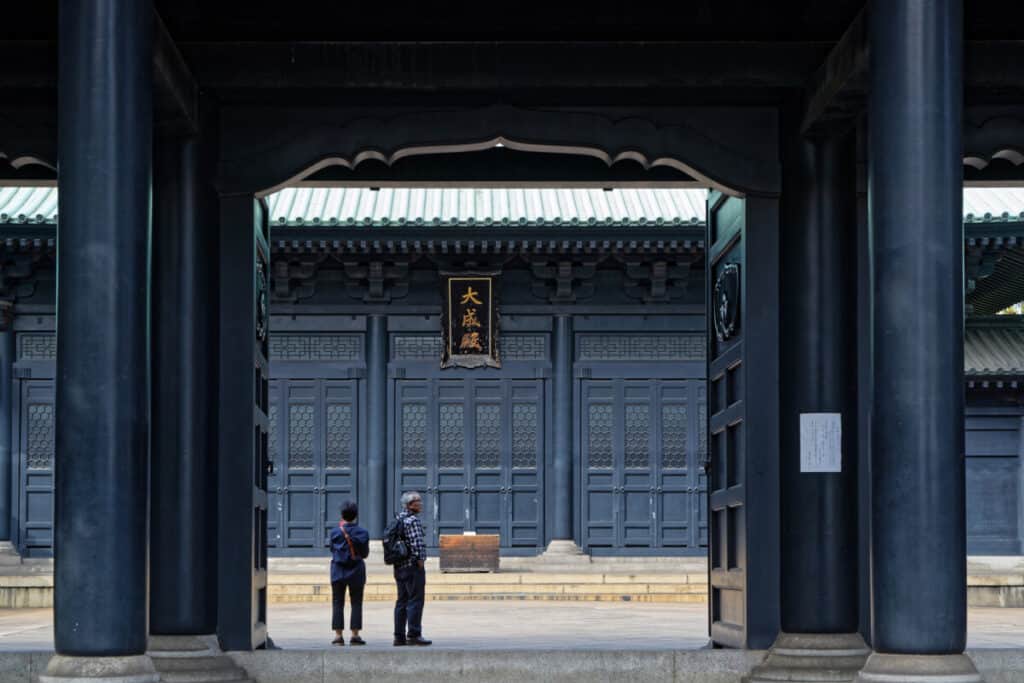
Originally a private Confucian shrine, Yushima Seido has a unique black exterior. Through the central door is a treasure room where the visitor can view paintings and artifacts.
The world’s largest statue of Confucius, a replica of the original 1632 Senseiden, “Shrine of the Ancient Sage,” stands at Yushima Seido.
Yasukuni Shrine (靖国神社 or 靖國神社, Yasukuni Jinja)
Outside the Imperial Palace grounds, Yasukuni Jinja is a controversial shrine sparking memories of conflict between China and Korea.
Memorializing 2 ½ million war dead since the 19th century, including World War Two, the shrine is a burial site for 14 Japanese war leadership some convicted at the 1948 Allied tribunal. One of those enshrined here was elevated to the level of a god, is the wartime prime minister Hideki Tojo.
Yasukuni Shrine Official Website
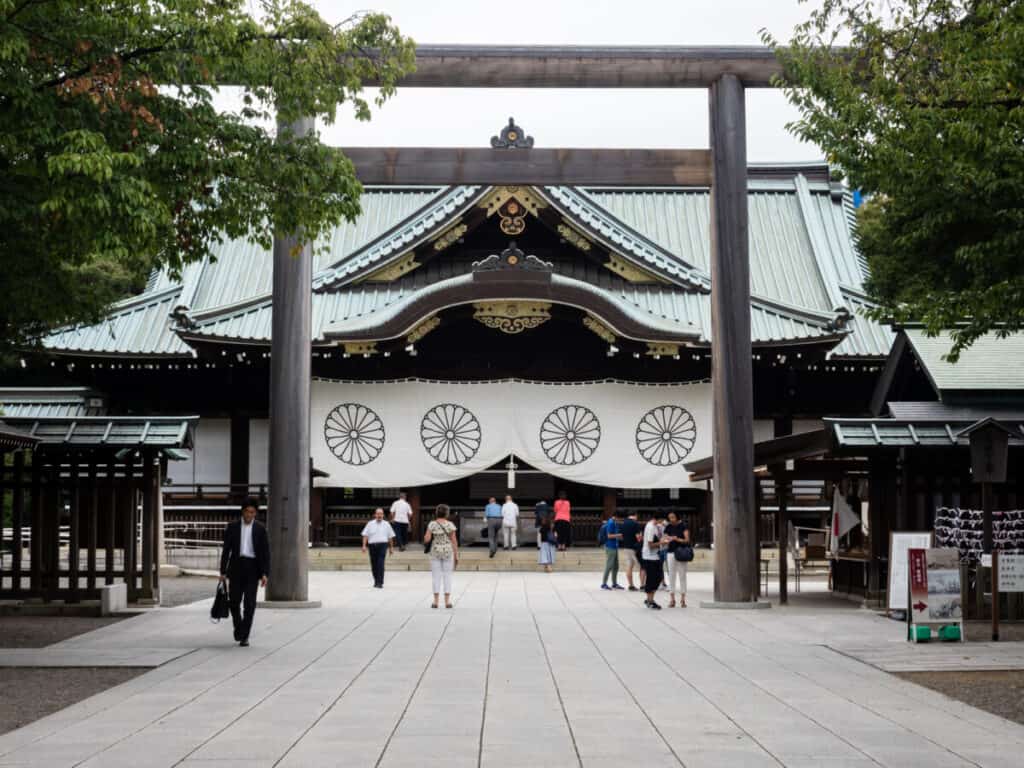
Despite the conflict generated by honors paid to military leaders of the second world war in the shrine, Japanese people insist they have the right to honor their war dead.
It is worthy to note Emperor Hirohito visited the shrine eight times but stopped due to his displeasure over the enshrined convicted wartime leaders. Akihito, his son, emperor from 1989 to 2019, never visited.
The current Emperor Naruhito has also never visited the site.
Kanda Myojin Shrine (神田神社 Kanda-jinja)
You can find this in Chiyoda, Tokyo. Originally a wooden Shinto shrine, it was rebuilt as a concrete structure in 1932 and survived the wartime bombing.
An important and popular celebration, the Kanda Matsuri, is held here every two years in mid-May. The shrine is beautifully ornate and detailed, another break from the stress of urban Japanese life.
The shrine is important to the warrior class of Japan. Many samurai warriors and daimyo warlords are worshipped here.
Kanda Myojin Shrine Official Website
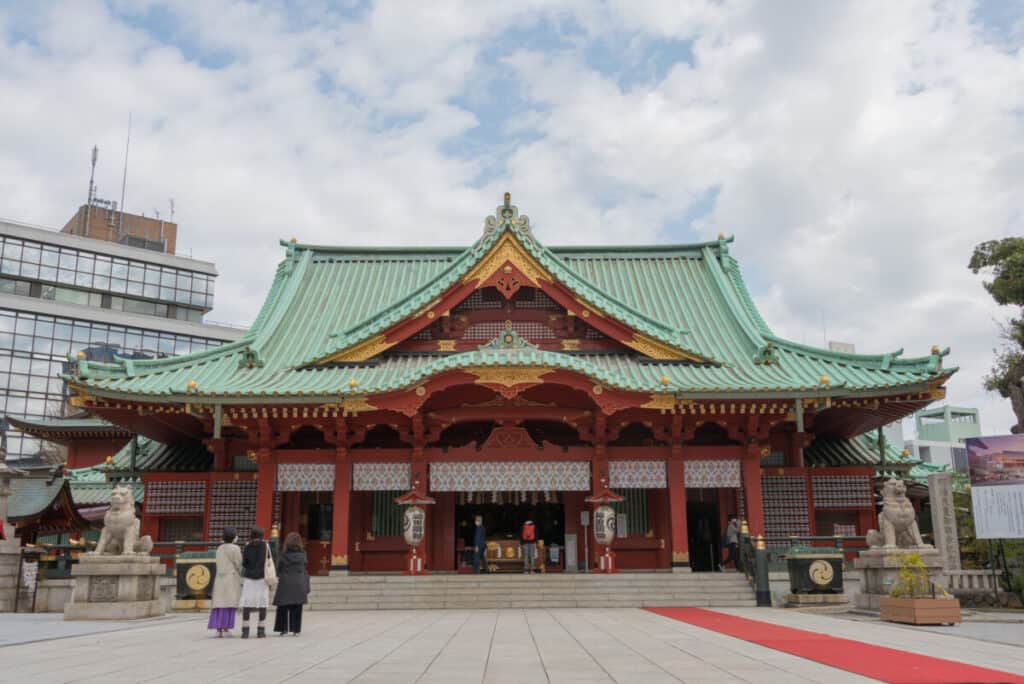
Daikoku (Onamuchi), the god of marriage, land management, medicine, and marital harmony, Ebisu (Sukunabikona), god of money and prosperity, and Taira no Masakado, associated with competition and protection from disaster, are the enshrined gods.
The shrine is a place for people to pray for good fortune and get their fortunes told via small slips of paper.
Sengaku Ji Temple (泉岳寺, Sengakuji)
This is a small temple close to Shinagawa Station in Tokyo. It is important as a Buddhist institution. Monks gathered there from all of Japan at its inception, at times up to 200, to practice and study.
While numbers are less today, the tradition continues with monks practicing here while studying Buddhism at university.
Sengaku Ji Temple Official Website
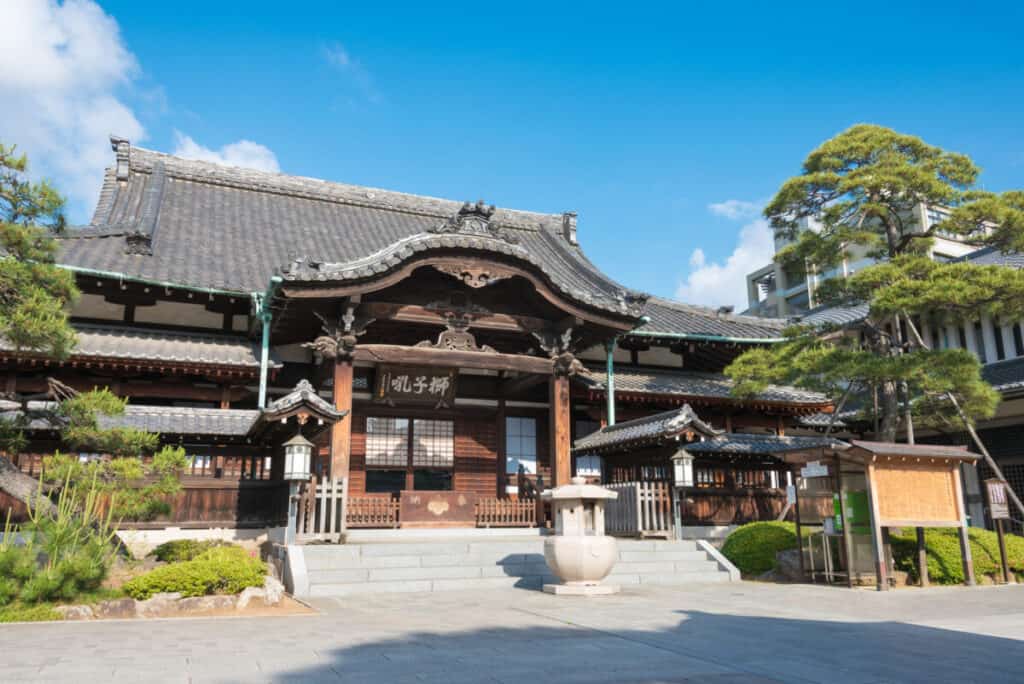
Sengakuji is popularized for the Akō incident of the “47 Ronin” buried in its graveyard, an allusion to a kabuki play based on an incident from the Edo period now turned into other plays, books, and movies.
Two museums are on the grounds where visitors can view weapons, scrolls, and armor from the samurai era. There is also a rock onsite with the blood from the samurai’s seppuku blades.
Senso Ji Temple (浅草寺, Sensōji, also known as Asakusa Kannon Temple)
Sensoji is located in Asakusa, Tokyo. Here you will find the Asakusa Shinto shrine, a five-story pagoda. You enter through Kaminarimon, or Thunder Gate, a symbol for Asakusa and Tokyo.
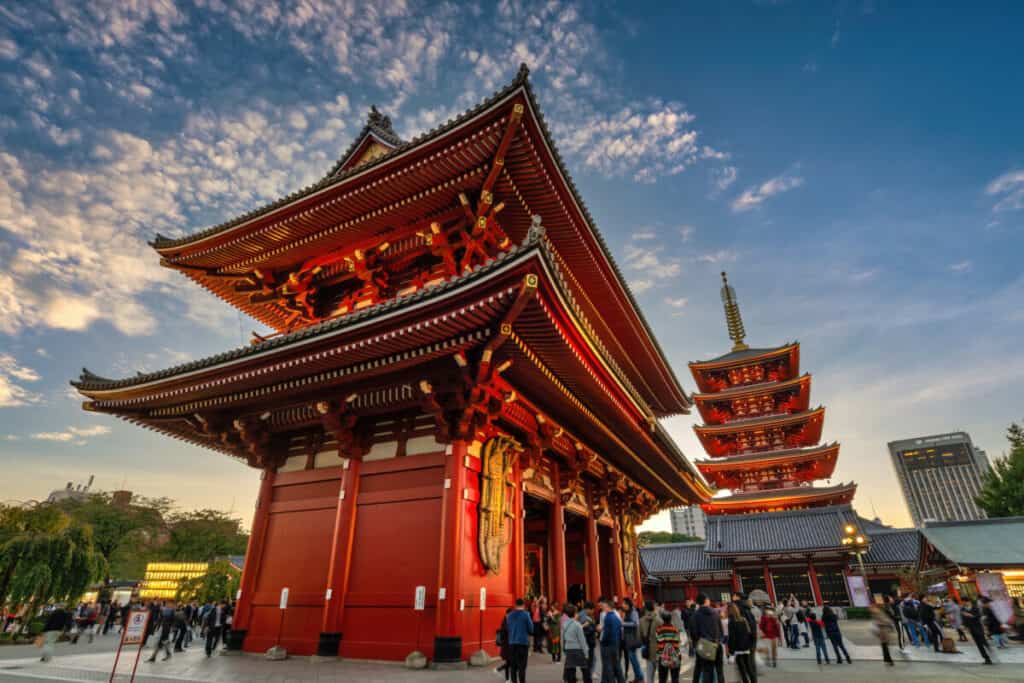
There are a variety of traditional merchant shops in the Nakamise-dōri. The Sanja Matsuri, the May festival of the Asakusa Shrine, the Asakusa Samba Carnival in August, and the Hagoita-ichi (Hagoita Market) occur in the area.
Sensoji, the most popular and most colorful temple in Tokyo, is also Tokyo’s oldest and most significant temple. It is an ancient Buddhist temple honoring the goddess of mercy, Kannon. Kannon is beloved because she is Bodhisattva and sacrificed herself for the Japanese people and all who suffer.
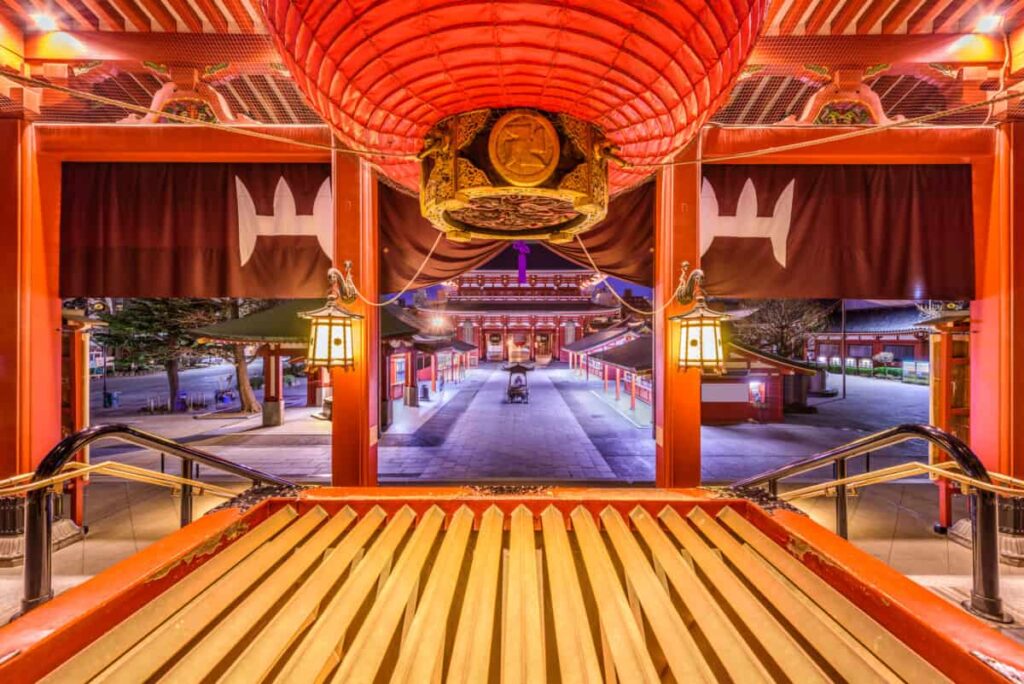
The story of the temple is of two brothers pulling a statue of Kannon, the goddess of mercy, from the Sumida River.
They put the statue back into the river, but it always came back to them. So, in the year 628, Sensoji was erected to enshrine Kannon.










